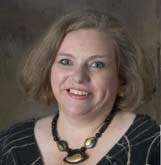Department for Public Health Issues Guidelines for Safe Eating
The thousands of Kentuckians left without electricity after high-powered winds swept through the state Sunday afternoon are strongly encouraged to follow food safety guidelines endorsed by the Kentucky Department for Public Health (DPH) to prevent food contamination and related illness.
DPH staff recommends keeping freezers closed to maintain the proper temperature for frozen foods. A full freezer will hold the temperature for approximately 48 hours and for 24 hours if the freezer is half full.
DPH cautions that a refrigerator will only hold its temperature for about four hours, meaning food items such as milk, dairy products, meats, eggs and leftovers should be placed in a cooler surrounded by ice if the outage lasts for more than four hours. Dry ice can be used to keep refrigerators cold. If the outage lasts for several days, 50 pounds of dry ice should preserve food in an 18-cubic foot full freezer for two days. (You must be careful when handling dry ice. Never touch dry ice with bare hands or breathe its vapors in an enclosed area. Dry ice is frozen carbon dioxide, a gas).
“Horrible situations like this one emphasize the need for emergency preparedness in the home,” said William Hacker, M.D., DPH commissioner. “Food that is improperly stored or handled can lead to foodborne illness, which can be debilitating and in some cases life threatening.”
If left without power, purchase one or more coolers, ice and a digital, dial or instant-read food thermometer, DPH recommends. Public health guidelines also recommend keeping appliance thermometers in the refrigerator and freezer, no matter how long the power has been out. The refrigerator temperature should be 40 degrees Fahrenheit or below; the freezer should be 0 degrees Fahrenheit or lower.
“If you are not sure a particular food is cold enough, take its temperature with a food thermometer,” said Hacker.
DPH recommends limiting the opening of freezer and refrigerator doors, even if an appliance has been out but returns to function within a couple of hours. If the freezer is not full, DPH strongly advises that poultry and meat items be grouped away from other foods to prevent juices from contaminating other items.
When the refrigerator and/or freezer are operating again, follow these guidelines to decide what to do with foods:
· Refrigerated foods should be safe as long as power is out for no more than four hours.
· Throw out any perishable food in your refrigerator, such as meat, poultry, lunchmeats, fish, dairy products, eggs and any prepared or cooked foods that have been above 40 degrees Fahrenheit for two hours. Bacteria can multiply to unsafe levels under these conditions.
· Fresh fruits and vegetables are safe as long as they are still firm and there is no evidence of mold or sliminess.
· If an appliance thermometer was kept in the freezer, read the temperature when power comes back on. If the appliance thermometer stored in the freezer reads 40 degrees Fahrenheit or below, the food is safe and may be refrozen.
· If a thermometer has not been kept in the freezer, check each package of food to determine the safety.
· If the food still contains ice crystals or is 40 degrees Fahrenheit or below, it is safe to refreeze.
· Raw meats, poultry, cheese, juices, breads and pastries can be refrozen without losing too much food quality.
· Prepared food, fish, vegetables and fruits in the freezer can be refrozen safely, but food quality may suffer.
“Remember, you can’t rely on appearance or odor of the food to determine if it’s safe,” said Hacker. “Food that has thawed or was held above 40 degrees Fahrenheit for more than two hours should be thrown out because bacteria may multiply to unsafe levels.”
To remove spills and freshen the freezer and refrigerator, DPH recommends washing with a solution of two tablespoons of baking soda dissolved in one quart of warm water. To absorb any lingering odors, place an open box or dish of baking soda in the appliance.
Tuesday, September 23, 2008
Subscribe to:
Post Comments (Atom)

No comments:
Post a Comment